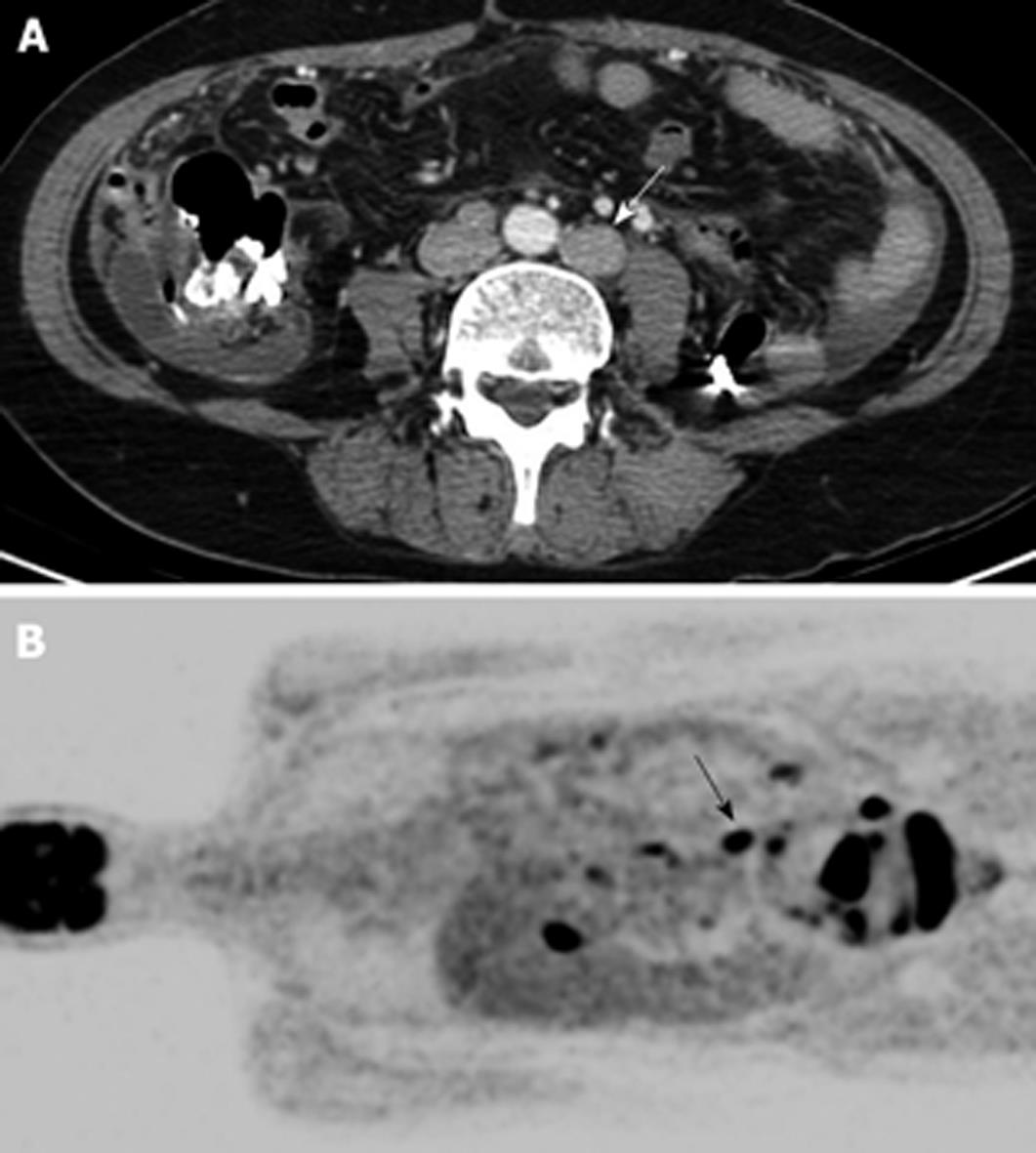Copyright
©2009 The WJG Press and Baishideng.
World J Gastroenterol. Sep 21, 2009; 15(35): 4434-4438
Published online Sep 21, 2009. doi: 10.3748/wjg.15.4434
Published online Sep 21, 2009. doi: 10.3748/wjg.15.4434
Figure 1 Typical case of metastatic paraaortic lymph node (PAN) on both computed tomography (CT) and positron emission tomography (PET).
A 52-year-old woman with ovarian cancer underwent CT and PET. (A) Axial CT scan shows enlarged (short diameter was 16 mm) and conglomerated PAN (arrow) and (B) coronal view of PET image shows positive FDG uptake in this PAN (arrow).
Figure 2 False positive metastatic PAN on CT.
A 38-year-old man with colon cancer underwent CT and PET. (A) Coronal CT scan shows multiple enlarged (short diameter was 8 mm in the largest one) PAN (arrow), but (B) coronal view of PET image shows negative fluorodeoxyglucose uptake in these lymph nodes. This patient had underlying inflammatory bowel disease of ulcerative colitis.
Figure 3 False negative metastatic PAN on PET.
A 72-year-old woman with common bile duct cancer underwent CT and PET. (A) Axial CT scan shows enlarged (short diameter was 12 mm) PAN (arrow) with surrounding fat infiltration, but (B) coronal view of PET image shows negative FDG uptake in this lymph node. Pathology was confirmed as metastatic lymph node.
- Citation: Lee MJ, Yun MJ, Park MS, Cha SH, Kim MJ, Lee JD, Kim KW. Paraaortic lymph node metastasis in patients with intra-abdominal malignancies: CT vs PET. World J Gastroenterol 2009; 15(35): 4434-4438
- URL: https://www.wjgnet.com/1007-9327/full/v15/i35/4434.htm
- DOI: https://dx.doi.org/10.3748/wjg.15.4434











